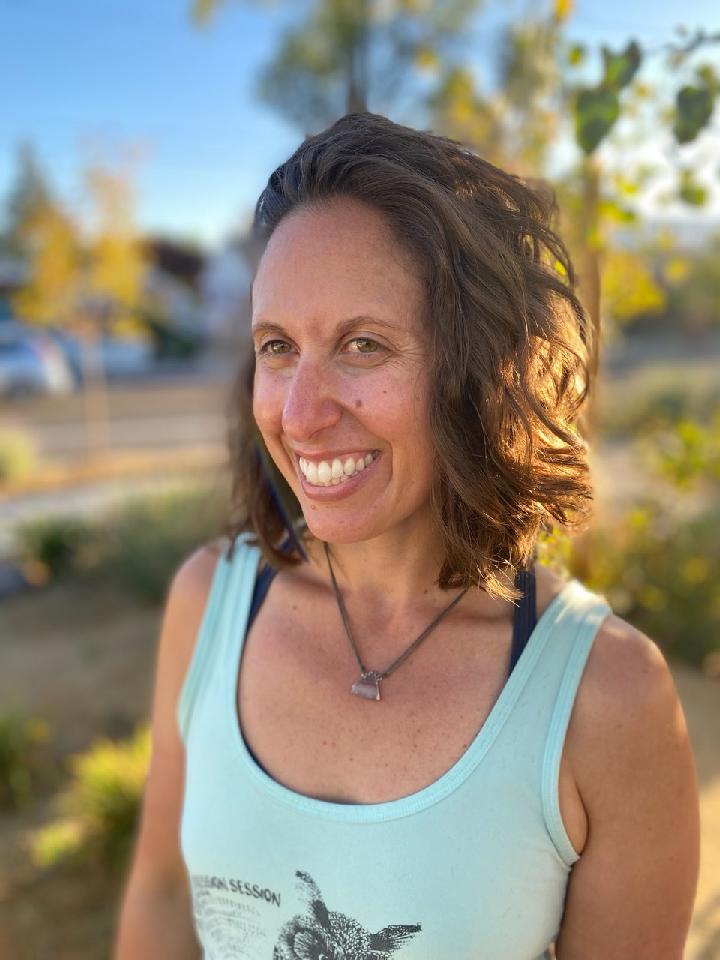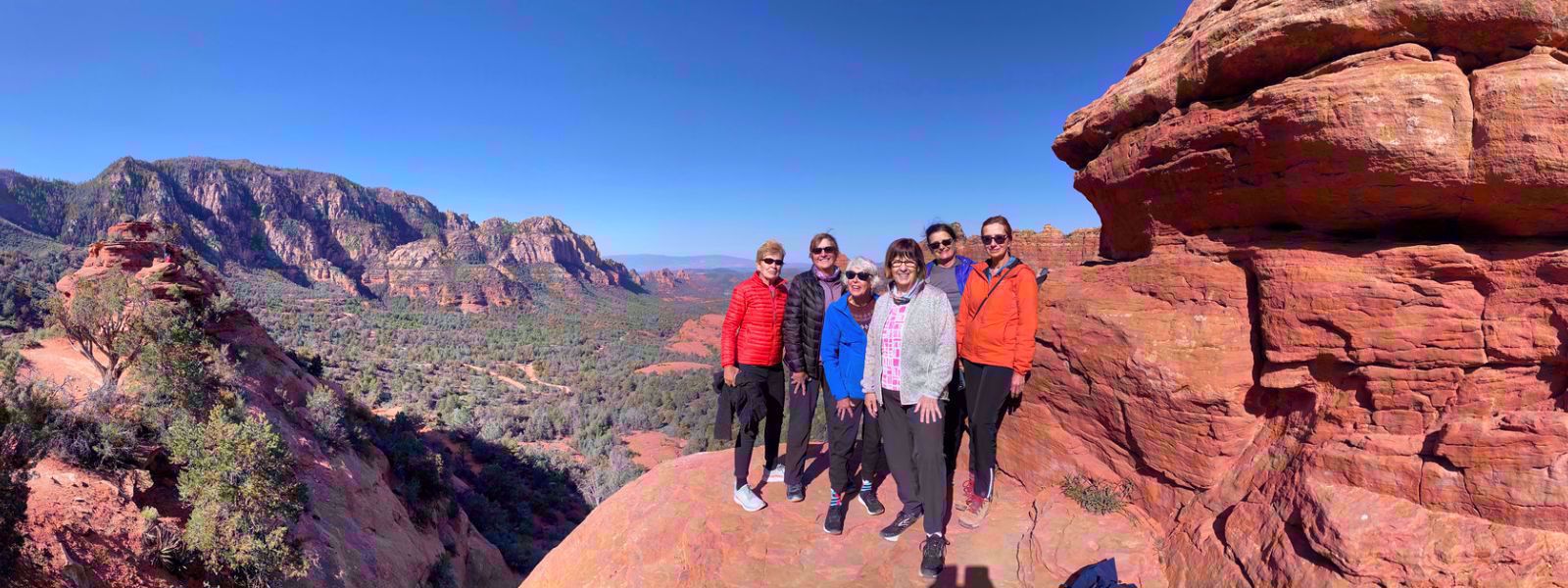Over the last few months, we’ve shared recommendations for supporting your own, and others’, mental health, as outdoor recreationists. We’ve mentioned it a time or two briefly, but there is one option that covers many of these tips – joining a guided adventure.
If you’re rolling your eyes – I get it. I’ve scoffed at hiring someone else to plan my trip, cook my food or carry my gear. However, after partaking in a few guided hikes in the last decade, I now appreciate the benefits. So, as you read this piece, know that the words come from a former cynic, converted to an advocate through first-hand experience.
Whether you’ve hesitated at paying a lump sum, taking a risk with strangers, or asking someone else to make itinerary decisions, I implore you to try it! Even a few-hour day hike or kayak tour can give you a taste of a different way to explore. You better believe you’ll reap at least one of the below benefits in only a few hours with a guide. If you’re curious to go big and say yes to a multi-day journey, I’d be shocked if you regretted it. I never have, and I am looking forward to the next one!
.jpeg)
Reduce Anxiety
Are you familiar with the trip planning phase where it’s all talk and no action? We have the general idea in mind but haven’t built the itinerary, booked any campsites, or invited anyone to join. Like most big decisions, we find ourselves in “analysis paralysis.” Maybe we can’t find anyone else to join us and are uncomfortable traveling solo. Or, we’re worried about getting injured or feeling unsafe (especially for those who identify as underrepresented groups like LGTBQIA+ or BIPOC). Or we think we’re too slow, novice, or out of shape. Maybe we don’t wear the brand name top-of-the-line gear or look different than the people we see in ads or articles. Or perhaps we enjoy the outdoors differently than the mainstream.
All of these anxieties are well-founded and understandable. Also, we don’t want them getting in the way of a fun and exciting outdoor experience! A guided trip can help. They create the itinerary, book the campsites/accommodations during the trip, and often buy the food, taking care of critical logistics. Going solo is no longer a worry because you have a guide and fellow adventurers.
Regarding safety, you’ll have a well-trained guide - as a Wilderness First Responder and, if you’re lucky, as a Mental Health First Aider. You’ll also have a supportive crew in case of prejudiced actions or uncalled-for discomfort from others on the trail. Affinity organizations can connect you with others that enjoy the outdoors like you, and support your learning in a comfortable, welcoming, and loving way, that you might not find with your general friend group.
.jpeg)
Build Your Support Network
For me, connecting with new people was what really won me over! I still consider the people I backpacked with on guided trips in Peru and Yosemite National Park dear friends. Even after years pass, we reminisce about slogging up a mountain pass flanked by glaciers or bathing in a river under the moonlight. You laugh, cry, and travel great distances with these people. Strangers become confidants as we discuss everything from motherhood to bowel movements.
What’s more, a group of strangers across the country, or the world, coming together with one shared interest usually leads to a more diverse group than you could ever dream of when inviting friends you already know. Over only two guided backpacking trips, I’ve hiked next to and gotten to know people with every skin color and from at least six different countries. Different accents, ages, and occupations are sprinkled into groups, mixing retired parents with college students, writers with lawyers, and other beautiful combinations of backgrounds coming together outdoors.
.jpeg)
Learn from Others
Want to try a new outdoor sport? There’s no better way to learn than with a guide and a supportive crew, who is likely learning alongside you. Otherwise, when exploring a new outdoor activity, there are countless roadblocks. What gear do we need, and how much will it all cost? Out of these hundreds of options for each item, how does one choose without trying before you invest heaps of cash? What locations suit beginners - which trails, lakes, and routes? It’s all overwhelming and confusing.
We might lose interest when we don’t have the gear, know where to start, or have someone to go with. And who will teach us the ropes if we get out there with the best equipment on the most appropriate trail? Just because someone is an expert skier, mountain biker, or climber, doesn’t mean they’re also an empathetic, patient, and willing teacher. Think about when you’ve seen two partners on a ski slope – one waits and sighs while the other scrambles and cries. This is why ski school exists. And it’s one of the reasons why guide companies exist.
This will improve confidence and set one up for future success, genuinely learning the basics - correctly and with encouragement - from the beginning. Testing out gear before buying makes one feel more at ease when purchasing, sure of what features are essential in real life. Even knowing what snacks and meals work best for each sport can help! Being well-fueled for an outdoor jaunt is surprisingly vital. When we don’t pack enough food, choose bulky or heavy meals, forget a key ingredient, or something falls apart in our bag, fun and buy-in plummets. Food is always a hot topic on group trips, before or during, sharing brands and sharing bites.
More important of all is learning how to be a steward for the environment you are exploring. Guided trips will teach the proper local care and respect for the land while actively modeling principles. Many guided overnight trips also explain how to comfortably and responsibly “go to the bathroom” in the woods – a topic every beginner is nervous about and feels awkward asking questions about.
.jpeg)
Budget Without Surprises
Many of us live on a tight budget. Try as we might, there are unforeseen costs on all trips. Maybe it’s an extra night in a hotel, buying a piece of gear we forgot, or a bus ticket from point A to point B when we had to change plans. However, with a guided trip, you have a flat rate! Yes, it is a steep flat rate, but outside of costs to get to and from the start point, there shouldn’t be any surprises (unless there is a medical emergency).
Sometimes the high price tag is one’s biggest roadblock to a guided trip. However, when planning my own travels, I’ve noticed the end cost is often higher than what I budgeted. Plus, most guided trips offer payment plans, and - if you register early - discounts of hundreds of dollars. Plus, you can save and budget for precisely the amount you need.
Setting financial goals, putting savings aside, and working towards an adventure you’re looking forward to, are all positive for one’s mental health. It aligns with making plans, creating hope, progressing forward, and orienting toward a goal. Plus, it will shape your priorities, in turn making it easy to communicate them to others. Whether you skip the weekly happy hour to save $30 a week, invite friends over for a potluck dinner rather than spending $50-100 out at a restaurant, or start making your coffee at home rather than visiting your favorite barista on your way to work, these modest changes create a direction, and add up to considerable sums! Plus, others will admire the laser focus and commitment.
With any guiding company, review their FAQs, payment plans, refund/cancellation policies, and special rates. For example, Adventures in Good Company has a few discount opportunities, up to 15% off a trip, not including “occasional special offers or last-minute discounts.” Be sure to subscribe to the company’s newsletter to be the first to know of these offers.
When considering a guided trip, we focus on the roadblocks rather than the rewards. The next time you longingly gaze at the blank dates in your calendar, or the double-digit hours of paid time off highlighted on your paycheck, contemplate the benefits of exploring with a guided group. Focus on how these companies can help reduce anxiety, increase connection, teach crucial skills, and outline a budget, all supporting your outdoor recreation mental health.
.jpeg)
About the author:Natasha Buffo is a creative non-fiction writer and a community mental health instructor. You can also find her work on Recreation.gov, the Fleet Feet Blog, GearJunkie, and Tahoe Quarterly Magazine. Natasha’s biggest writing project is her unpublished memoir, which shows that travels can be put on pause but the lives of our loved ones sometimes can’t. When she’s not in front of the computer, you’ll find her snowboarding in Tahoe, riding her bike across states, kayaking on alpine lakes, camping in the backcountry, hiking on unpopular trails, or walking her new puppy. Learn more at www.dirtandtears.com or connect on Instagram or LinkedIn. |
|
 |



